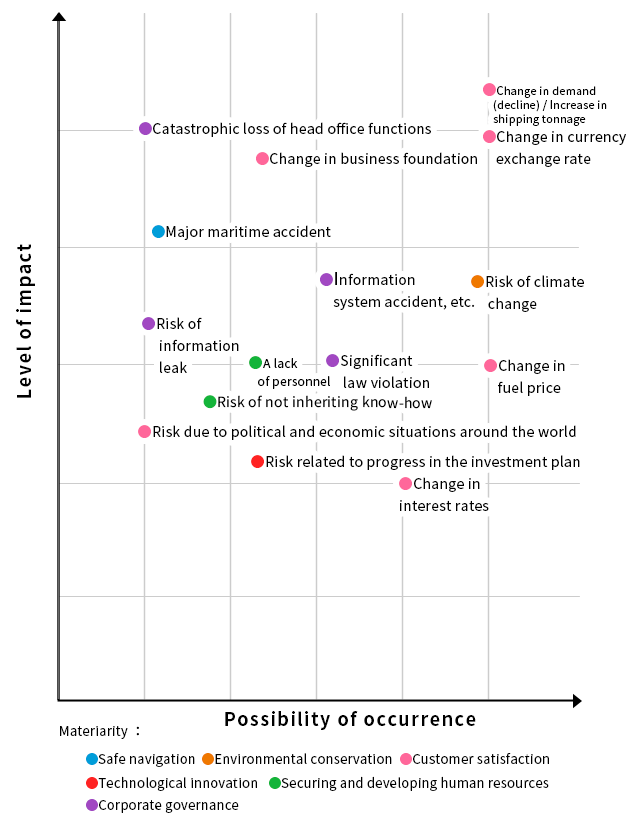Risk management regulations have been established as fundamental requirements for risk management. By following these requirements, we ensure the continuation and stable development of our business, even if substantial risks impacting management should emerge.
Based on these regulations, the relevant departments of the Company analyze and study measures against the various potential risks that could arise in the course of business activities and the Board of Executive Officers and Board of Directors discuss and determine these issues.
At the end of each fiscal year, we perform review of risk items and reporting on the management implementation status based on the Risk Item List.
Also, we created a risk map in order to comprehensively understand risks and identify them by priority (level of impact). This supplements the Risk Item List and informs the entire Company of the risks in greater depth, reaching down to the working levels, with more details and using specific examples.
In addition, with regards to large, high-risk projects, the Investment Committee deliberates in advance on the possible impact or risks on the profitability, business performance, and on the financial situation of the Company, and provides its findings to the Board of Executive Officers and the Board of Directors.
Risk Map

Business Continuity Plan (BCP)
A BCP has been established so that, in the event of a major disaster, the Company can safeguard employees and their families as well as continue operations to fulfill our social responsibility of being reliable in delivering marine transportation services to our customers even in times of emergency.
As our main systems are installed in a data center, we are prepared to work from home even if our head office is shut down in the event of a major disaster. We regularly update our security systems and software to the latest versions to strengthen our cybersecurity, in response to recent cyberattacks on other companies. In addition, the Emergency Response Manual was created to set out initial actions to be taken in the event of an emergency.
Among these actions, the highest priority is given to promptly confirming the safety of employees and their families and reporting the results according to the established reporting line. To familiarize employees with the related procedures, periodic emergency drills are conducted using a system to confirm employee safety.
We will revise the Emergency Response Manual, which currently focuses on seismic disasters, expanding the scope of responses to include various types of emergency risks associated with other kinds of natural disasters, cyberattacks, infectious disease pandemics, global supply chain constraints such as those caused by the Russian invasion of Ukraine, terrorism, corporate scandals and other factors. We thus aim to shift to an all-hazards approach for our BCP, in accordance with the recommendation issued by Keidanren (Japan Business Federation) in February 2021.


